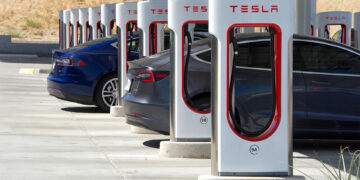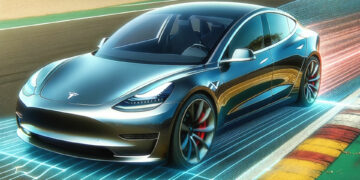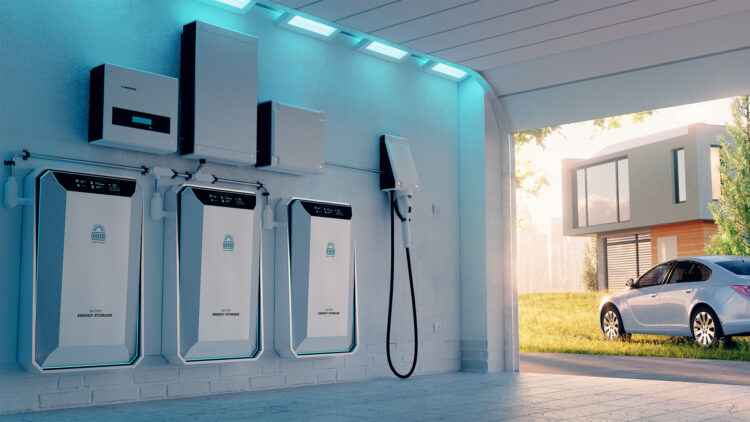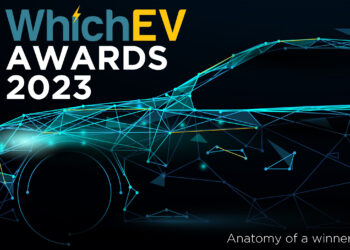With the continuing trend toward greater energy efficiency and local generation, WhichEV wanted to find out more about the technologies that are being developed in the area of alternative power. Given the solar panel market is estimated to be worth somewhere in the region of $223 billion by 2026, we decided to start with the renewable that the majority are most familiar with. We spoke to Suki Matharu, an experienced Solar PV and Energy Storage Industry Specialist to give us an overview of where things stand. He has more than 10 years' experience in the solar renewable energy industry with extensive knowledge of the latest solar PV and energy storage technologies – and he uses that knowledge to help develop strategies that drive cost efficiencies while optimising solar energy operations.
Solar panels are made using photovoltaic (PV) modules. At the most basic level, a semi-conducting layer of material (for example, silicon) is exposed to sunlight. A small amount of electrons in the silicon atoms jump from their regular ‘non-conducting' orbit, to a more energetic path, causing a flow of electricity. Although a popular source of renewable energy, they are far from 100% efficient.
The world's first PV experiment (back in the 1800s) operated at less than 1% efficiency. In 1954, Bell Laboratories produced what is generally considered to be the first ‘useful' solar cell, which was around 6% efficient. Most panels these days are in the low twenty percent range, although high-efficiency ones can hit 25% or more and researchers are targeting big leaps in the coming years – with 30% in sight, probably using a perovskite base. Given that we can't easily change the amount of sunlight that hits the Earth, efficiency is crucial – so we need to understand why panels are nowhere near as efficient as we would like.
There are several reasons why this is the case, including:-
Materials
The materials used in PV modules have a natural limit to their efficiency. Silicon, which is the most commonly used material in PV modules, can only convert a certain portion of the light it absorbs into electricity. This is known as the Shockley-Queisser limit and it places a theoretical maximum limit on the efficiency of silicon-based PV modules.
Wavelength of light
Not all wavelengths of light can be converted into electricity. Only a portion of the solar spectrum, known as the “photovoltaic window,” can be effectively converted into electricity. Light that falls outside of this range is either reflected or absorbed and does not contribute to the electrical output of the PV module.
Losses in electrical conductivity
Energy is lost during the conversion and transmission of electrical energy. For example, some energy may be lost as heat, while other energy may be lost due to resistance in the electrical conductors. These losses can reduce the overall efficiency of the PV module.
Temperature
The efficiency of PV modules decreases as their temperature increases. This is because the internal resistance of the materials used in PV modules increases as the temperature rises. This increase in resistance leads to a reduction in the amount of energy that can be converted into electricity.
Manufacturing imperfections
Minor flaws and impurities in the manufacturing process can also impact the efficiency of PV modules. For example, if the materials used in a PV module are not perfectly pure, this can reduce the efficiency of the module. Additionally, if the module is not manufactured to precise specifications, this can also impact its efficiency.
Understanding these factors can help improve the efficiency of PV modules and increase their overall effectiveness as a source of renewable energy.
Right now, some of the most advanced experiments are looking at ways of achieving efficiencies close to 50%, with a team that works with John F. Geisz at the National Renewable Energy Laboratory in Colorado having published a paper detailing how they plan to pass 47%.
The fact that PV is based on electronics that we understand very well means the path toward these improvements seems fairly straightforward. In the meantime, something like cold fusion always seems to be 30 years away.
Today, solar panel engineers talk about using anywhere between 12 and 36 panels to power a home. Doubling how much power we get from a panel, would mean that number could be as low as 6 panels for a basic installation and 12-15 for the possibility to move off the grid.
According to the International Energy Agency (IEA), right now the world is drawing close to 24,000 tera Watt hours (tWh). This will grow closer to 60,000 tWh by 2050, as we move away from carbon fuel sources. It's possible that over 90% of the power we generate in 2050 will come from renewable sources. Wind and solar will be key – contributing up to 25,000 tWh each.
As the efficiency of solar improves, the value of home installations will increase. This will be particularly useful for EV drivers, who can take advantage of the free electricity. It's clear that personal/local power generation will play a huge role in decarbonising the planet.























Discussion about this post